We Saved 17.3% On Last Month’s Electric Bill
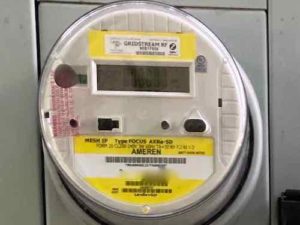
Many more of you now have a smart electric meter, assuming you’re an Ameren Missouri customer, than when I have previously posted about this new technology — and the variety of billing rates that go along with it.
My three prior posts:
- April 2021: Smart Electric Meters & Time Of Use (TOU) Rate Plans Coming To Ameren Missouri Customers
- June 2021: Smart Meter Installed, On A Time Of Use (TOU) Electric Plan
- August 2021: We Saved Money On Our Electric Bill By Switching Rate Plans
We have now completed 8 billing cycles using new time of use (TOU) billing rates — the rate charges varies depending upon the time of day. We did one month of Evening/Morning Savers, four months of Ultimate Savers, and the last three on the Smart Savers plan. The latter plan is best for us, more on that below.
You’re probably thinking you don’t want to mess with new rate plans, you’ll just stick with the flat rate (aka Anytime Users) you’ve always had. Sorry, if you have a new smart meter Ameren will automatically move you to the Evening/Morning Savers plan. This plan charges slightly less for electricity used between 9pm and 9am.
Why is Ameren Missouri changing all meters and complicating electrical rates? They’re trying to minimize energy use during peak demand periods. Think about shopping malls, they have massive amounts of unused surface parking — except for peak periods like Black Friday when parking lots fill up. Surface parking, unfortunately, is cheap so building extra capacity that isn’t used most of the time is no big deal. Energy plants, on the other hand, are incredibly expensive. Plus, Ameren is planning to shut down its second largest coal plant later this year.
Ideal for energy unities (natural gas & electric) the demand would be perfectly flat 24/7/365. Reality is our air conditioning, electric heat, electric clothes dryers, lighting, and electric cooking use isn’t flat. Most people have similar enough schedules they cool off the house after work in summer, make meals at the same time, etc. These activities cause spikes in demand. Roller coaster use isn’t a good match for electricity generation.
Spikes in energy demand are costly to deal with, so it’s better for electric utilities to reward customers to help flatten out demand. So peak times cost more, off peak less. Peak demand happens at different times of the day in winter months compared to summer months.
All four of Ameren’s TOU rate plans have a few common elements.
Summer rates are valid for 4 months, June-September. Thus, winter rates are the remaining 8 months, October-May. The flat rate we’ve all had for years has been different in summer vs winter — higher in summer because of air conditioning demand. What’s new is the variability based on the time of day, and day of week.
Let’s review the plans, starting with the flat rate we’ve all had for years — the same rate no matter the time of day or the day of the week.
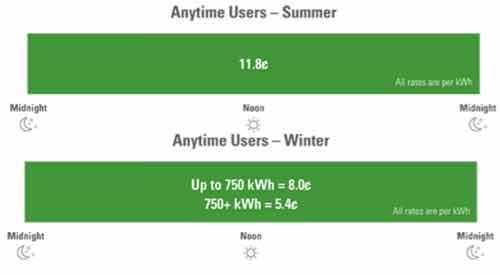
Now we can get into the new plans, starting with the one Ameren has moved you to after installing the smart meter:
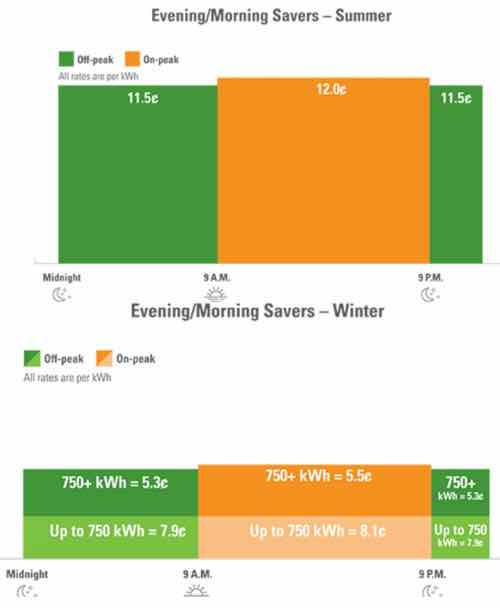
Here are the other three rate plans. They can be confusing but after 4 months Ameren can show you the average cost of each plan based on your usage.
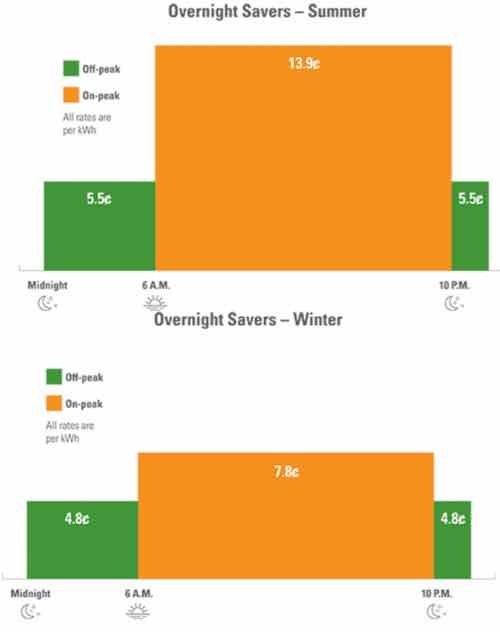
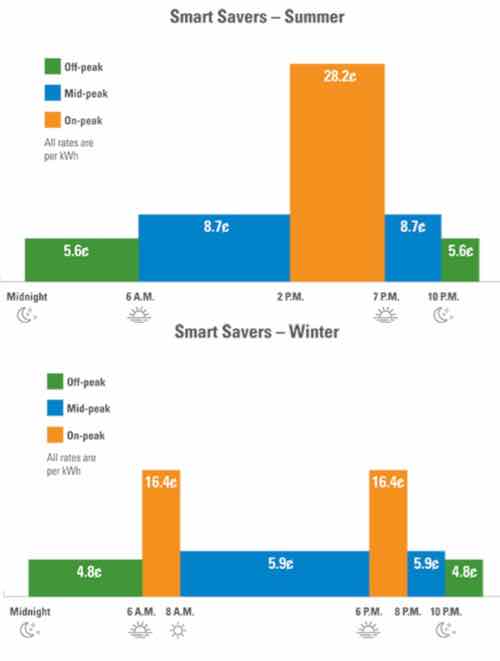
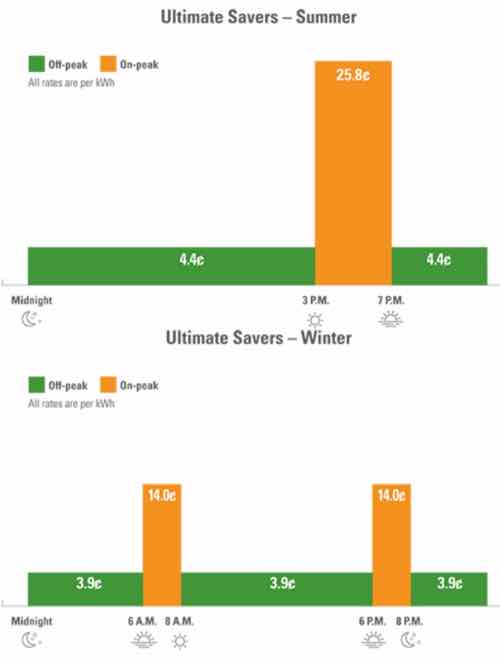
I should note here that major holidays are a break from peak rates, see my first post on TOU rates for specifics.
I jumped into plans as soon as I could, without waiting 4 months to see which plan was best for us. However, I’ve also changed when we use electricity because of these rates — trying to maximize our savings each month. When our report was available I could clearly see the Smart Savers rate plan would save us over the Ultimate Savers plan. I switched based on the report and now that we’re in winter and using electric heating we’re saving big money each month.
We recently received our February bill for the period 1/22/22-2/22/22 — a savings of $12.39 compared to the old Anytime flat rate. The previous cycle we saved $10.64. So far we’ve cumulatively saved $29.22 on time of use rates compared to the old flat rate — nearly 80% of that amount in just the last two billing cycles! I can’t wait to see the savings after we’ve been on our current TOU rate plan for a full 12 billing cycles. Ameren doesn’t tell you the savings, but I’m a spreadsheet geek so I don’t have to do the math manually.
Our apartment is 100% electric, about 15 years old, 3 exterior walls, with two occupied apartments above ours — winter heat is a bigger expense than summer cooling. The best plan for you may be different, all you need to do is log into your Ameren account online to see the approximate average cost per month for each of the time of use billing rates.
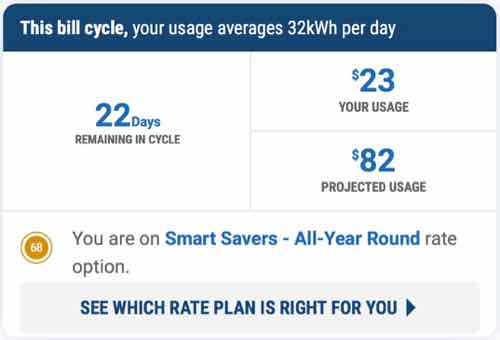
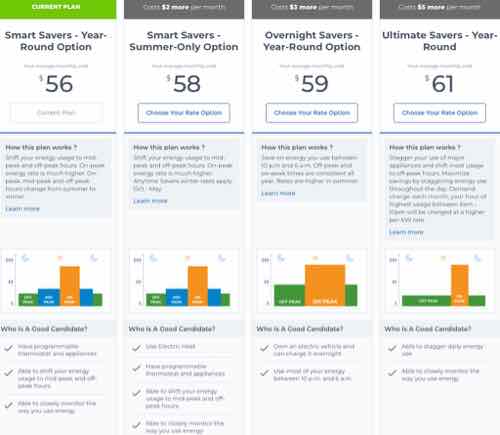
And finally, what makes these new electric meters so smart? They’re able to understand what is using electricity based on the loads. This allows Ameren to show me reports like these:
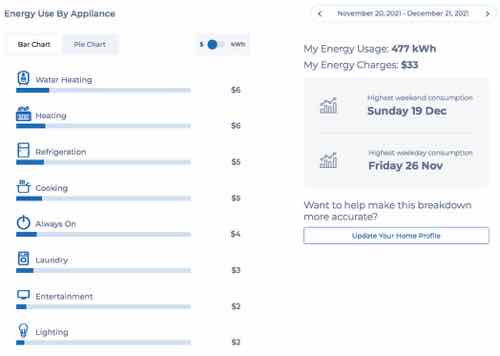
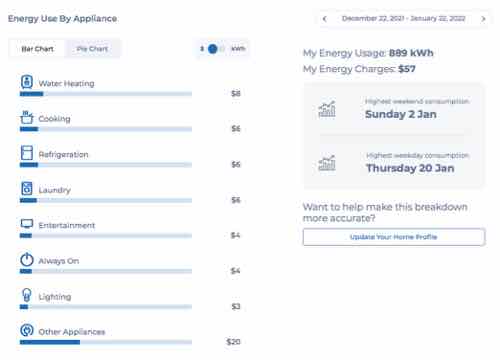
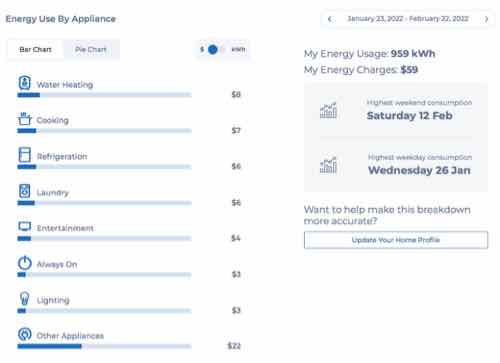
Once you have a login for your account it only takes a minute to see if they’ve had enough data from your use to compare rates. You might be paying more each month than necessary.
I mentioned that I did make changes in an effort to reduce our energy costs. I used to do 3 loads of laundry per week, in the mornings. I now do 2 loads timed so the dryer isn’t turned on until 10pm. The washer is set to tap cold water. Most of the time our dishwasher is also run after 10pm — the heat dry and other energy sucking features are off. The dishwasher is occasionally run during the mid-peak time, but never during full peak. Our thermostat is set to a temperature during peak hours so our heat/cooling won’t kick on. I’ve not made any changes to what, how, or when we cook.
In addition to saving money by using some appliances during off-peak hours, we’re using less electricity. Here’s the totals for the last 3 years:
- 2019: 10,179 kWh
- 2020: 9,620 kWh
- 2021: 7,447 kWh
The weather, of course, plays a role in our heating & cooling costs.
Without changing your life you can potentially save money by checking out Ameren’s advanced time of use billing rates — let them show you the comparison. If you’ve only just received your smart meter check bask online each month to see if they have a comparison ready. If you can additionally reduce energy use during peak hours you can save even more.
— Steve Patterson